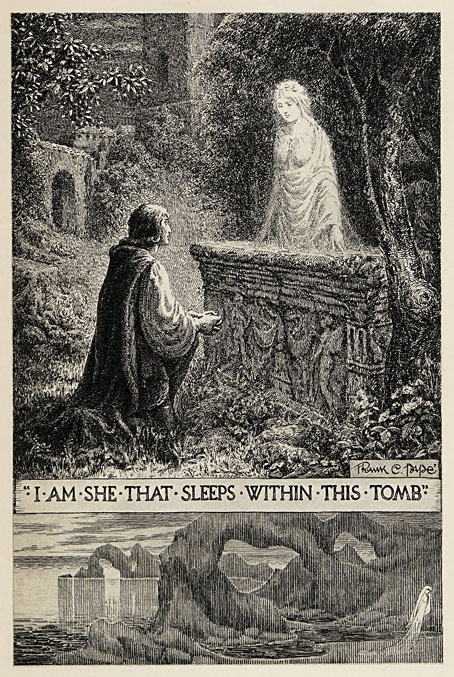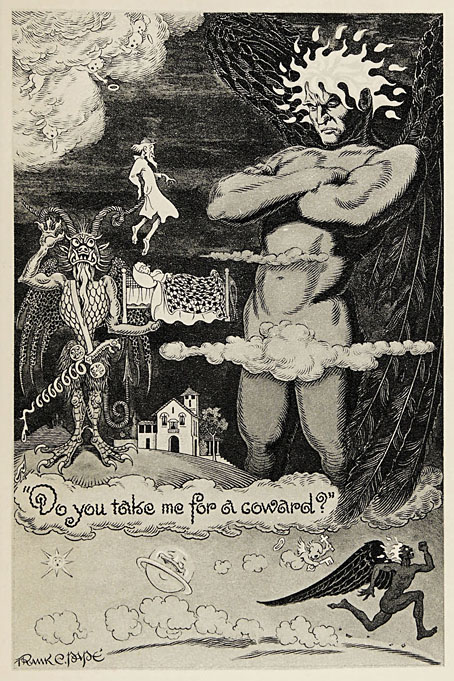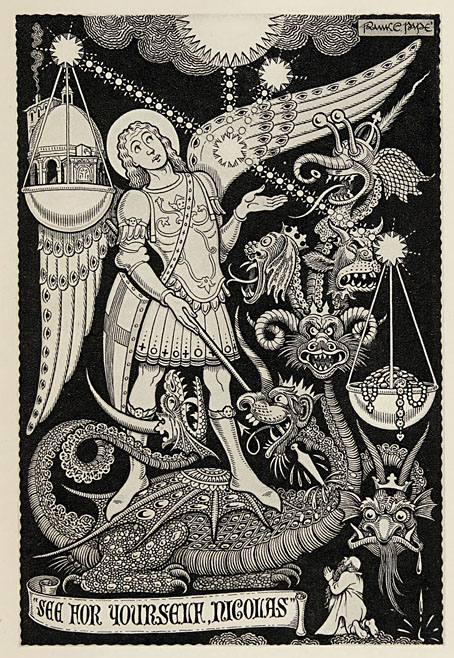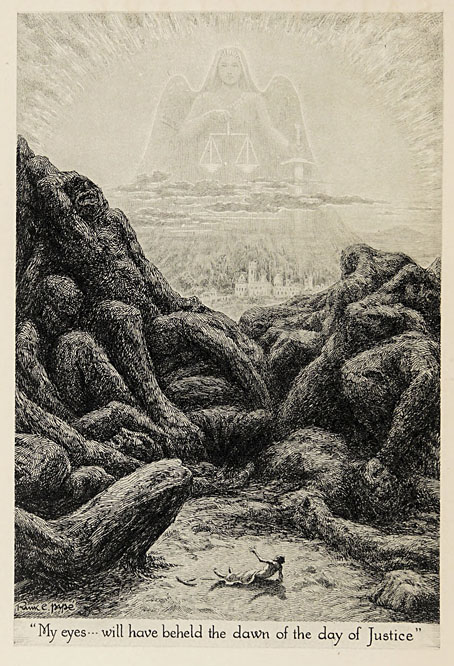
I was asked recently if I’d ever written anything about British illustrator Frank C. Papé (1878–1972). The answer was no for two reasons, the first being that where book illustration is concerned I like to be able to point to whole books, and until recently there hasn’t been much of Papé’s work available in complete editions. The second reason is that Papé’s illustration is often broadly comic, to a degree that had he been born a generation or two later he might have been drawing humorous comic strips or editorial cartoons. Papé was very adept on a technical level but his drawings aren’t always to my taste so I’ve never spent much time looking for his books.
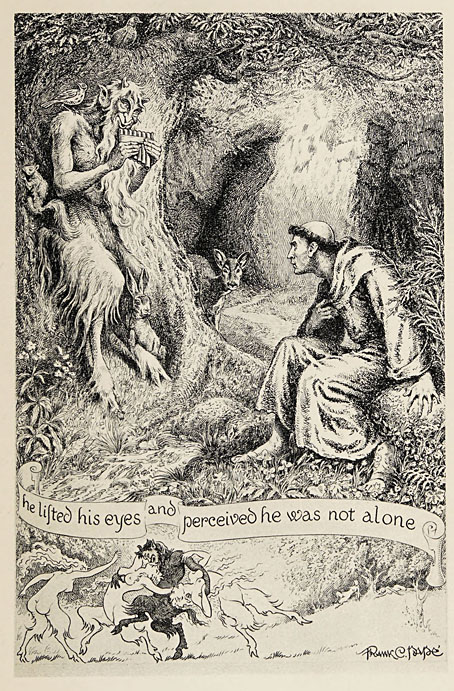
The first of those caveats has been ameliorated by recent uploads at the Internet Archive which include this volume, one of several Anatole France editions with Papé illustrations. The Well of Saint Clare (1928) is a collection of religious stories set in the medieval era. The book appeared a few years after Papé had illustrated James Branch Cabell’s Jurgen: A Comedy of Justice, a quasi-medieval fantasy which was the subject of a celebrated obscenity case in the USA. Anatole France’s satires were almost as contentious for a time—the Vatican put his books on their prohibited list—which leaves me wondering whether Papé had a natural inclination for risqué material or whether his publishers pushed him in this direction. Probably a little of both.
